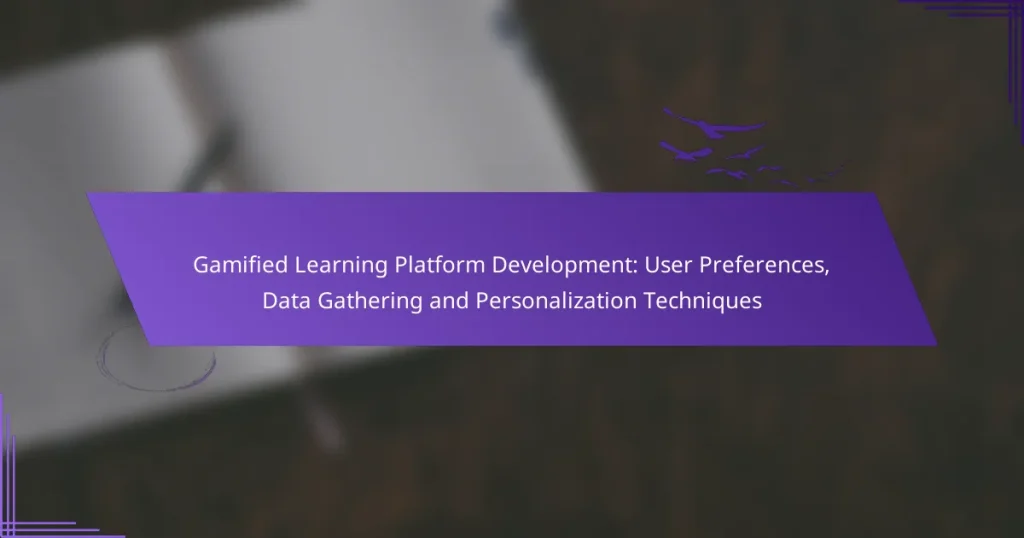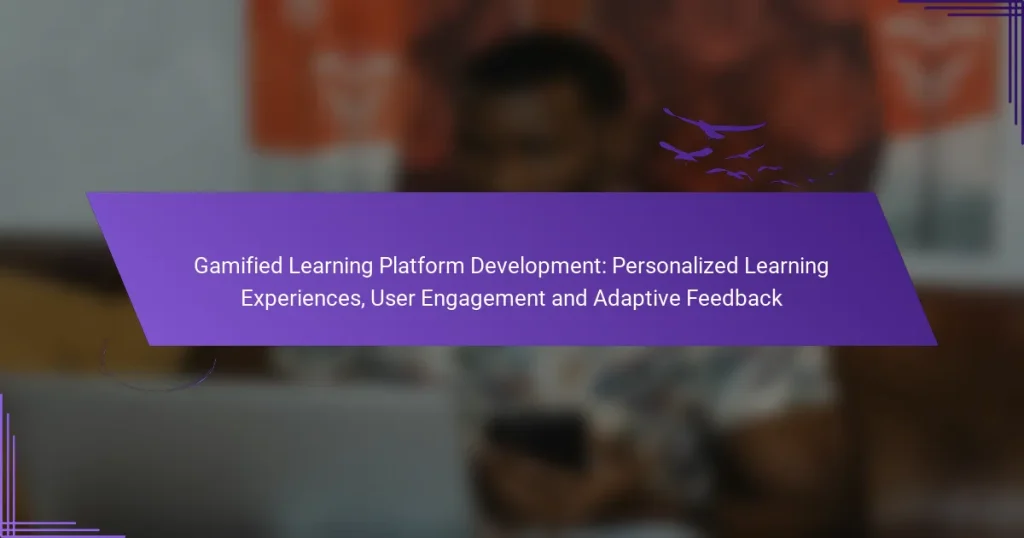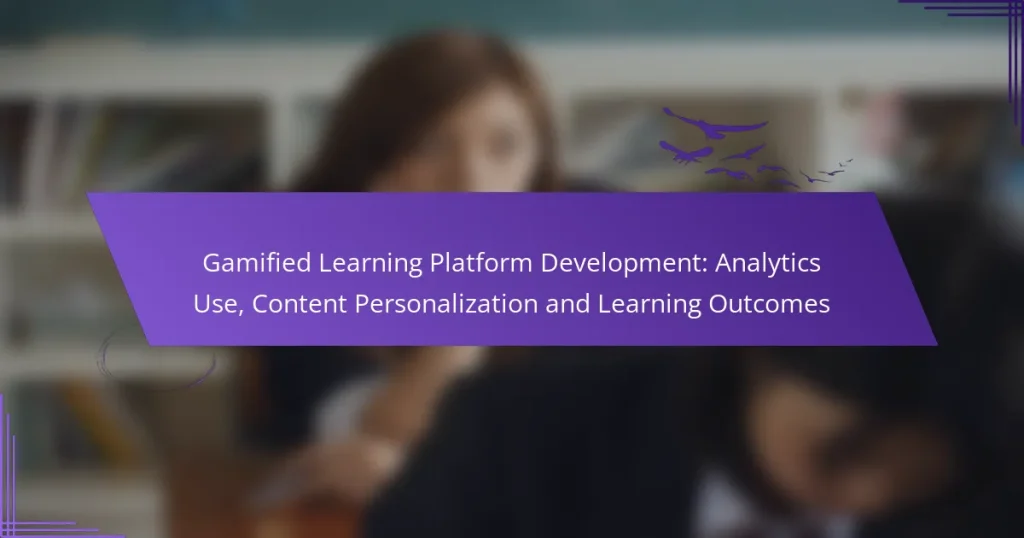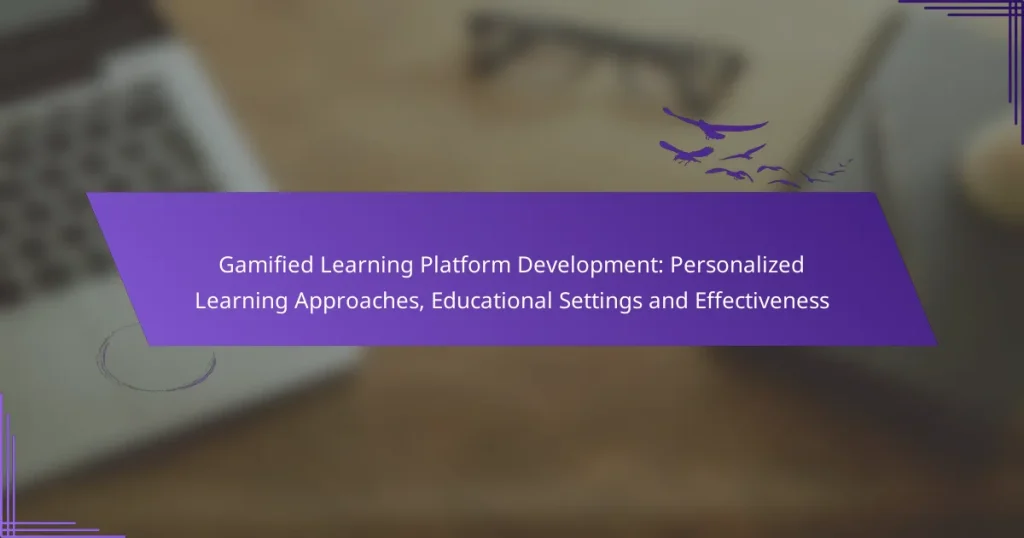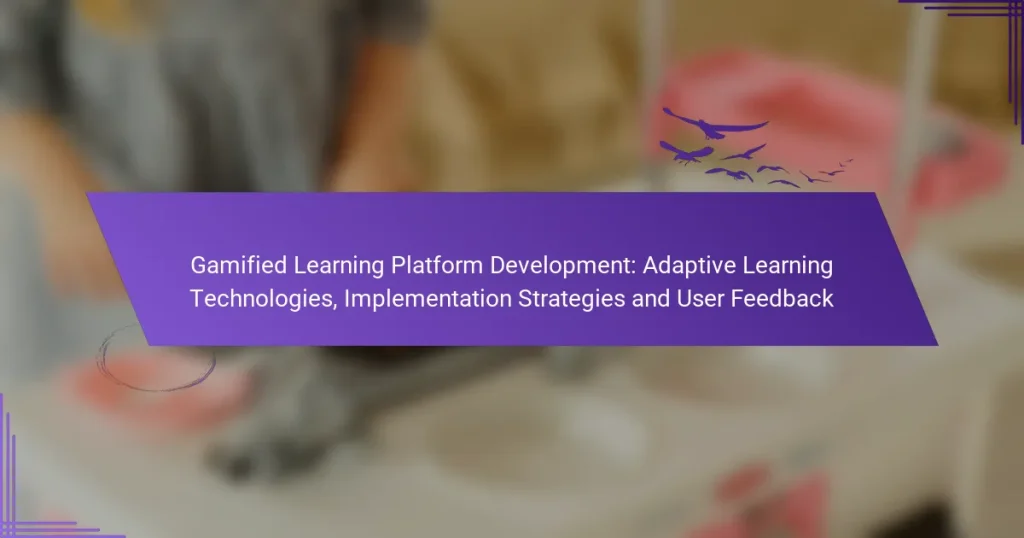Content personalization is a transformative approach in online learning that customizes educational experiences to meet the unique needs and preferences of each learner. By leveraging adaptive technologies and user data, educators can create engaging and effective learning environments that lead to improved outcomes. This tailored approach not only enhances user satisfaction but also fosters deeper engagement with the material.
Gamified Learning Platform Development: User Preferences, Data Gathering and Personalization Techniques
Gamified Learning Platform Development: Personalized Learning Experiences, User Engagement and Adaptive Feedback
Gamified Learning Platform Development: Analytics Use, Content Personalization and Learning Outcomes
Gamified Learning Platform Development: Personalized Learning Approaches, Educational Settings and Effectiveness
Gamified Learning Platform Development: AI Integration, Content Personalization and User Experience
Gamified Learning Platform Development: Adaptive Learning Technologies, Implementation Strategies and User Feedback
How does content personalization improve online learning?
Content personalization enhances online learning by tailoring educational experiences to individual needs, preferences, and learning styles. This approach fosters a more engaging and effective learning environment, ultimately leading to better outcomes for learners.
Increased engagement
Personalized content captures learners’ attention by aligning with their interests and goals. When learners encounter material that resonates with them, they are more likely to participate actively and invest time in their studies.
For instance, adaptive learning platforms can adjust the difficulty level of tasks based on a learner’s performance, keeping them challenged but not overwhelmed. This dynamic adjustment helps maintain high levels of motivation and engagement throughout the learning process.
Enhanced retention
Content personalization significantly boosts information retention by presenting material in a way that is relevant to the learner. When students see how concepts apply to their lives or future careers, they are more likely to remember the information.
Research indicates that personalized learning experiences can improve retention rates by substantial margins. Techniques such as spaced repetition and contextual learning can further enhance memory by revisiting key concepts at optimal intervals.
Tailored learning paths
Personalized learning paths allow students to progress at their own pace, focusing on areas where they need improvement while skipping content they already understand. This flexibility accommodates diverse learning speeds and styles, making education more accessible.
For example, a learner struggling with algebra can receive additional resources and practice opportunities, while another who excels can move on to more advanced topics. This individualized approach not only supports mastery of content but also fosters a sense of ownership over the learning journey.
What are effective strategies for content personalization?
Effective strategies for content personalization include utilizing adaptive learning technologies, analyzing user behavior, and delivering dynamic content tailored to individual preferences. These approaches enhance user engagement and satisfaction by providing relevant experiences based on user data.
Adaptive learning technologies
Adaptive learning technologies adjust content delivery based on a user’s interactions and learning pace. This method is commonly used in educational platforms, where the system modifies lessons according to the learner’s strengths and weaknesses, ensuring a more personalized experience.
To implement adaptive learning, consider using algorithms that track user progress and preferences. For example, an online course might offer additional resources or quizzes based on previous performance, helping users grasp challenging concepts more effectively.
User behavior analytics
User behavior analytics involves collecting and analyzing data on how users interact with content. This strategy helps identify patterns and preferences, allowing businesses to tailor their offerings to meet specific user needs.
Tools like Google Analytics or heat mapping software can provide insights into user behavior. For instance, if analytics show that users frequently abandon a page after a few seconds, it may indicate that the content is not engaging enough, prompting a review and adjustment of that material.
Dynamic content delivery
Dynamic content delivery refers to the practice of presenting different content to users based on their profiles or behaviors. This technique can significantly enhance user experience by ensuring that the content is relevant and engaging.
For example, an e-commerce website might display personalized product recommendations based on past purchases or browsing history. Implementing dynamic content requires robust data management systems to ensure timely and accurate content updates, which can lead to higher conversion rates and improved customer loyalty.
Which tools facilitate content personalization in online courses?
Several tools effectively enable content personalization in online courses, allowing educators to tailor learning experiences to individual student needs. These platforms utilize data analytics and user feedback to create customized learning paths, enhancing engagement and retention.
Thinkific
Thinkific offers a robust platform for content personalization through features like quizzes, surveys, and user analytics. Instructors can create tailored learning experiences by assessing student performance and preferences, allowing for adaptive learning paths. This flexibility helps in addressing diverse learning styles and paces.
Additionally, Thinkific supports integrations with various marketing tools, enabling course creators to segment their audience and deliver personalized content based on user behavior. This can significantly enhance the overall learning experience and improve course completion rates.
Teachable
Teachable provides several personalization options, including customizable course content and automated email marketing. Instructors can segment their students based on progress and engagement, allowing for targeted communication and tailored resources. This approach helps maintain student interest and motivation throughout the course.
Moreover, Teachable’s analytics tools enable instructors to track student performance and adapt content accordingly. By identifying which modules students struggle with, educators can offer additional resources or modify course materials to better suit their audience’s needs.
LearnDash
LearnDash is known for its advanced features that support personalized learning experiences, such as dynamic course progression and prerequisites. Educators can set up conditional content that unlocks based on student performance, ensuring that learners only access materials when they are ready. This method fosters a more effective learning environment.
Furthermore, LearnDash integrates with various third-party tools, enhancing its personalization capabilities. By utilizing these integrations, instructors can create a more tailored experience, including personalized feedback and recommendations based on individual learner data.
What are the key benefits of personalized content?
Personalized content offers several advantages, including enhanced engagement and relevance for users. By tailoring information to individual preferences and needs, organizations can significantly improve user experiences and outcomes.
Improved learner satisfaction
Personalized content leads to higher learner satisfaction by addressing specific interests and learning styles. When learners receive material that resonates with them, they are more likely to feel valued and engaged in the learning process.
For example, an online course that adapts its content based on a learner’s previous interactions can create a more enjoyable experience. This can result in positive feedback and increased loyalty to the educational platform.
Higher completion rates
Personalization can significantly boost course completion rates. When content is tailored to individual learning paths, learners are more motivated to finish their courses, as they find the material relevant and engaging.
Studies have shown that personalized learning experiences can lead to completion rates that are substantially higher than traditional, one-size-fits-all approaches. This is crucial for educational institutions aiming to improve their overall performance metrics.
Better learning outcomes
Personalized content enhances learning outcomes by aligning educational material with the learner’s needs and pace. Tailored experiences allow learners to grasp concepts more effectively, leading to improved retention and application of knowledge.
For instance, adaptive learning technologies can assess a learner’s progress and adjust the difficulty level accordingly. This ensures that learners are neither overwhelmed nor bored, optimizing their educational journey and resulting in better overall performance.
What challenges exist in implementing content personalization?
Implementing content personalization can be complex due to various challenges, including data privacy concerns, resource allocation, and technical integration issues. Each of these factors can significantly impact the effectiveness and feasibility of personalized content strategies.
Data privacy concerns
Data privacy is a major challenge in content personalization, as businesses must navigate regulations like GDPR in Europe and CCPA in California. These laws impose strict guidelines on how personal data can be collected, stored, and used, which can limit the scope of personalization efforts.
Organizations need to ensure they have explicit consent from users before collecting their data. Failing to comply with these regulations can lead to hefty fines and damage to reputation.
Resource allocation
Effective content personalization requires significant resources, including time, budget, and skilled personnel. Companies must invest in data analytics tools and platforms that can analyze user behavior and preferences, which can be costly.
Additionally, teams may need to be trained or expanded to manage these tools effectively. Businesses should assess their current capabilities and determine if they can allocate the necessary resources without compromising other critical areas.
Technical integration issues
Integrating personalization technologies with existing systems can pose significant technical challenges. Many organizations use multiple platforms for content management, customer relationship management, and analytics, which may not seamlessly work together.
To overcome these issues, businesses should consider adopting a unified platform that supports personalization or invest in middleware solutions that facilitate integration. Ensuring that all systems communicate effectively is crucial for delivering a cohesive personalized experience.
How can educators measure the effectiveness of personalization?
Educators can measure the effectiveness of personalization by analyzing student performance data and gathering feedback. Key metrics include engagement levels, academic outcomes, and student satisfaction, which together provide insights into how well personalized approaches are working.
Analytics and reporting tools
Analytics and reporting tools are essential for tracking the effectiveness of personalized learning strategies. These tools can analyze data on student interactions, progress, and outcomes, allowing educators to identify trends and areas for improvement. Common platforms include Learning Management Systems (LMS) that offer built-in analytics features.
When selecting analytics tools, consider those that provide real-time data and customizable reports. This enables educators to quickly adjust their approaches based on student needs. For example, if a significant number of students struggle with a specific topic, targeted interventions can be implemented promptly.
Feedback surveys
Feedback surveys are a direct method for assessing the impact of personalized learning. By asking students about their experiences, educators can gain valuable insights into what works and what doesn’t. Surveys can cover aspects such as engagement, clarity of instruction, and perceived relevance of materials.
To maximize the effectiveness of feedback surveys, keep them concise and focused. Use a mix of quantitative and qualitative questions to gather comprehensive data. For instance, a Likert scale can quantify satisfaction levels, while open-ended questions can provide deeper insights into student thoughts and feelings.

